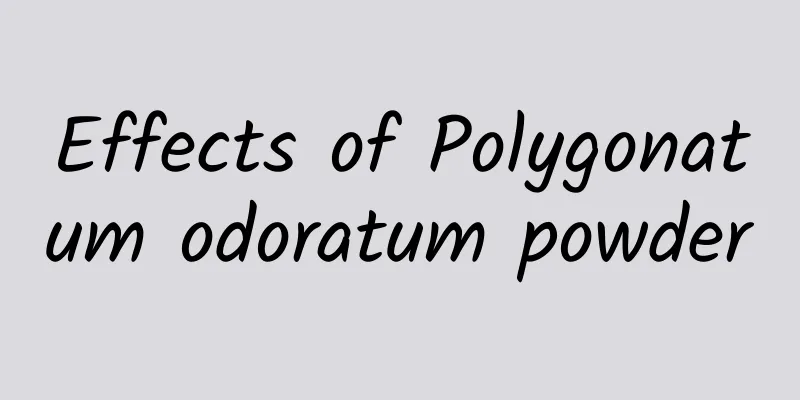Puerperal infection, symptoms and signs to know

|
Puerperal infection is an infection caused by bacteria during the delivery process or postpartum period. Severe puerperal infection can cause death in women. The most typical symptoms of puerperal infection are fever, changes in lochia and abdominal pain. Antibiotics should be used in time for treatment. 1. Perineum, vagina and cervix infection When the episiotomy wound becomes infected, pain will occur in the perineum and the mother's movements will be restricted. The wound is locally red, swollen, tender, and has a lump when touched. The wound is cracked and has purulent secretions. Infection at the site of vaginal laceration is often secondary to vaginal assisted delivery. The vaginal mucosa becomes congested and edematous. When the infection is severe, it can spread to the paravaginal tissues, causing adhesions and scarring of the vaginal wall. In severe cases, tissue necrosis and shedding may occur, forming a vesicovaginal fistula or a urethral vaginal fistula. Once a deep cervical laceration becomes infected, it can spread through the lymph nodes or directly, causing pelvic connective tissue inflammation. 2. Abdominal wall wound infection after cesarean section It often occurs 4 to 7 days after surgery. Antibiotic treatment is ineffective, body temperature persists, wound pain, local redness and swelling or nodules, obvious tenderness, exudation or purulent secretions from the wound, and in severe cases, the wound may split open and even lead to the uterine incision. 3. Postpartum uterine infection It often manifests as acute endometritis and myometritis. Bacteria invade the placental detachment surface and spread to the decidua layer of the uterus, causing acute endometritis. If the infection spreads to the deep muscle layer, it will form myometritis. When the inflammation is limited to the endometrial layer, there will be local congestion and edema, endometrial necrosis, and a large amount of purulent secretions. The mother will experience lower abdominal pain and fever, with the body temperature mostly around 38°C. The lochia will be large and have a foul odor, the uterine involution will be delayed, and there will be tenderness at the fundus of the uterus. If the inflammation is controlled promptly, the necrotic tissue can be peeled off within a few days, the endometrium can be repaired, and the symptoms will disappear. On the contrary, highly virulent pathogens (such as Escherichia coli) can spread to the myometrium and parauterine tissue, causing uterine myositis and pelvic cellulitis. In severe cases, the peritoneum can even be affected, causing peritonitis. Its clinical characteristics are often women who have undergone cesarean section, or have retained placenta, or have difficult forceps delivery. The parturient may experience chills, high fever, lower abdominal pain, and lochia of varying amounts with or without a foul odor. The total white blood cell count is significantly increased, the uterus is poorly involuted, and there is tenderness at the uterine fundus. If accompanied by symptoms of systemic poisoning, the patient should be alert to the occurrence of sepsis. |
<<: What is the good diet for vitiligo?
>>: The appropriate population for Anshen Bu Nao Liquid, rational use of medication is the key
Recommend
Why do you urinate frequently in summer? How should you drink water in summer?
Many friends often do not seek treatment when the...
Why do I feel chest tightness when it’s time to go to bed?
Sleep itself has many benefits for our human body...
Six signs of gastrointestinal problems
The following "warning signs" are signs...
Bright red lochia more than a month after delivery
After giving birth, both natural and caesarean se...
3 months pregnant, stomach pain
When a woman is about three months pregnant, her ...
Quickly eliminate buttocks
The symptom of nodules on the buttocks mainly occ...
How to exercise for lung qi deficiency? Two methods are recommended, which are simple and easy to understand.
Lung Qi deficiency refers to symptoms of weakened...
The efficacy, effects and contraindications of Chinese herbal medicine Artemisia capillaris
Artemisia capillaris, also known as Yinchen or wh...
White bubbles on nipples when breastfeeding
White bubbles on the nipples during breastfeeding...
Chronic pelvic inflammatory disease treatment with traditional Chinese medicine
The occurrence of chronic pelvic inflammatory dis...
The efficacy of Vitamin C Yinqiao Tablets
I believe everyone is familiar with Vitamin C Yin...
Can nasal septum cartilage regenerate?
The structure of the nose is very complex and dif...
What is ichthyosis?
Ichthyosis is usually a chromosomal problem and h...
Taboos of mulberry leaves
Xie Xin: Everyone has seen mulberry trees in life...
Massage can help you lose weight, don’t say you didn’t know!
The magical thing about traditional Chinese medic...









